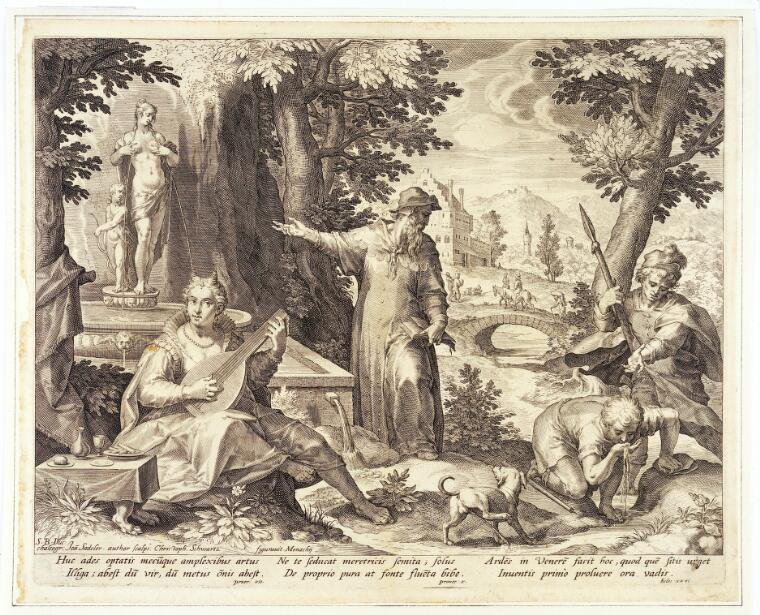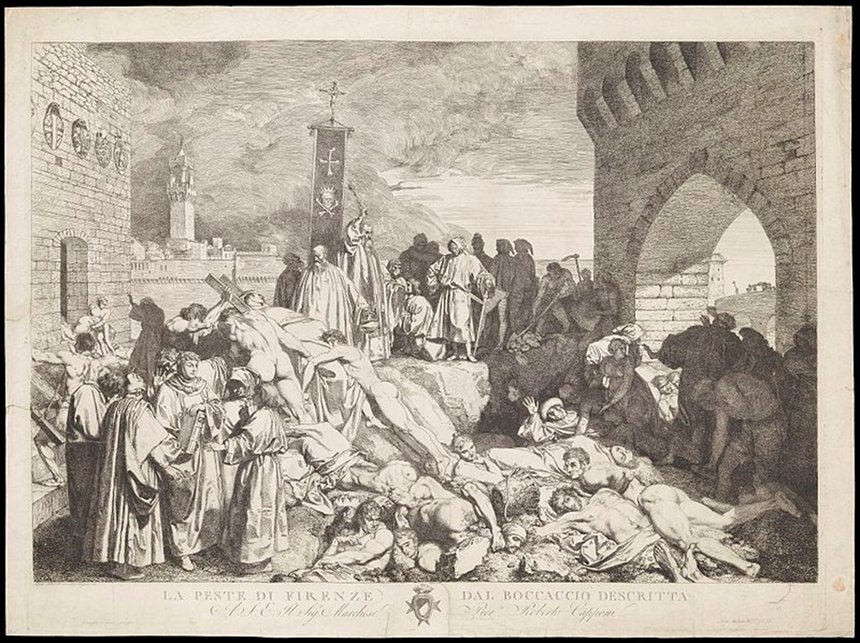The 16th century saw an unprecedented number of new epidemic diseases. They ranged from syphilis and the English Sweat, a viral disease that affected largely Britain, to others more exotic, such as the scherbock, a form of land scurvy found in Scandinavia and the Netherlands, and the Hungarian disease, probably typhoid, which affected armies quartered in late spring of 1577 on the Hungarian plains facing the Turks. Bubonic plague was also endemic throughout Europe, with major outbreaks causing thousands of deaths almost everywhere at least once in a generation.

As today, doctors initially assumed that any new epidemic disease would have a similar explanation to those with which they were most familiar: a combination of individual receptivity with some harmful change in the air, whether brought about by an astral conjunction or divine wrath at human sins. But they also noted that some diseases appeared to change over time: syphilis became less virulent and was spread almost entirely by sexual contact and bubonic plague was viewed largely as a disease of the poor. Hence the surprise at the English Sweat or “Stop-gallant”, which attacked the rich and the young.
Medieval quarantine
In 1546 a doctor from Verona in Italy, Girolamo Fracastoro (1483-1553) published a treatise on contagion and contagious diseases in which he argued that contagious diseases, such as measles, plague and syphilis, were spread by seeds or “seedbeds” of disease that could be passed on at a distance by fomites (contaminated objects) such as clothing and furnishings, as well as in corrupted air and by touch. This theory was not entirely new. The Roman poet Lucretius had spoken of seeds of disease, the ancient Greek physician Galen had briefly toyed with the notion and Fracastoro discussed contagion in the context of ancient ideas about sympathy and antipathy. The seeds were attracted to suitable recipients and repelled by appropriate precautions.
Health officials in Italy had long believed in imposing quarantine, segregating sufferers from both leprosy and plague, and in burning the belongings of the infected, so Fracastoro provided them with a theoretical justification for their existing procedures. Some cities, such as Milan, went further and set up a complex network of information posts that would allow early precautions to be taken against traders and travellers coming from infected regions.

Britain lagged behind most of Europe. It had no health boards and almost no town physicians before 1600. It was not until 1518 that arrangements were made for doing more than cleaning the streets and occasionally segregating the sick. There were no plague hospitals, or lazaretti, such as were found in Florence or Venice, and administration was left to individual parishes. How effective the continental system was at combatting epidemic disease is debatable. What is clear is that major outbreaks of plague, as in Venice in 1576, were often the result of the authorities’ failure to take action in time or, as in the Tuscan town of Montelupo in 1633, of the breakdown of trust between sections of the community.
Effective action preventing widespread infection
One occasion when effective action prevented widespread infection occurred during the so-called Moravian Plague in 1577. An unknown disease broke out in the city of Brno in present-day Czech Republic and was associated with a large influx of visitors who came to take the waters at a bath complex just outside the city gate. They had come over the festal holiday of St Lucy on 13 December 1577 to enjoy themselves and many also to be bled at the baths to prepare for the Christmas festivities. Over 150 fell ill in the city and its suburbs, as well as an unknown number back in the countryside.
At first people suspected a mass poisoning, threatening the owner of the baths and causing his assistant, who had carried out the procedures for bleeding, to flee. The regional medical officer, Thomas Jordanus, strongly argued against poison, on the grounds that the oozing sores, painful limbs and long-term prostration were typical of some form of infection. He equally rejected syphilis as the cause, although its symptoms were similar, since that was, in his view, a sexually transmitted disease and his patients included old women, young girls and the wives of highly respectable burghers who could not have been infected in this way. Instead, he argued that some harmful material had been brought in from the countryside by dirty peasants and was transmitted during venesection, when knives and cupping glasses had not been thoroughly cleaned between each use (unknown to him, syphilis could also have been transmitted in this way.) Jordanus was particularly struck by the fact that many of those who fell ill had been subjected to several bleedings from different sites in the body, thus allowing the seeds of the disease greater opportunity to penetrate beneath the skin. He ordered the baths to be thoroughly cleaned and the rooms where he suspected the disease was most active to be demolished and rebuilt. He treated his patients as if they were suffering from syphilis, particularly with sweating regimes, and by Easter he was convinced that all those in the town were now recovered. Those in the countryside he knew and could do little about.
Coping with an outbreak of a new disease
Jordanus wrote up his experiences in a tract on the Moravian plague that was intended to be a guide to how to cope with an outbreak of a new disease. The first task was to gain as much information as possible and then to decide whether this was something new, endemic or the return of a sporadic infection. If it was widespread, then one needed appropriate methods of containment, as well as ways to identify the initial cause. Above all, his book is a plea for the reasoned use of information, even in the face of competing explanations. It is a good example of how a 16th-century doctor, aided by new ideas about contagious diseases, could deal successfully with a localised epidemic.
Vivian Nutton is Emeritus Professor of the History of Medicine at University College London. He was elected a Fellow of the British Academy in 2008. He has written extensively on the history of medicine, including Galen: A Thinking Doctor in Imperial Rome and Ancient Medicine.
Image credits:
Hieronymus Fracastorius Wellcome Collection. Attribution 4.0 International (CC BY 4.0)
The plague of Florence, 1348: Wellcome Collection. Attribution 4.0 International (CC BY 4.0)

